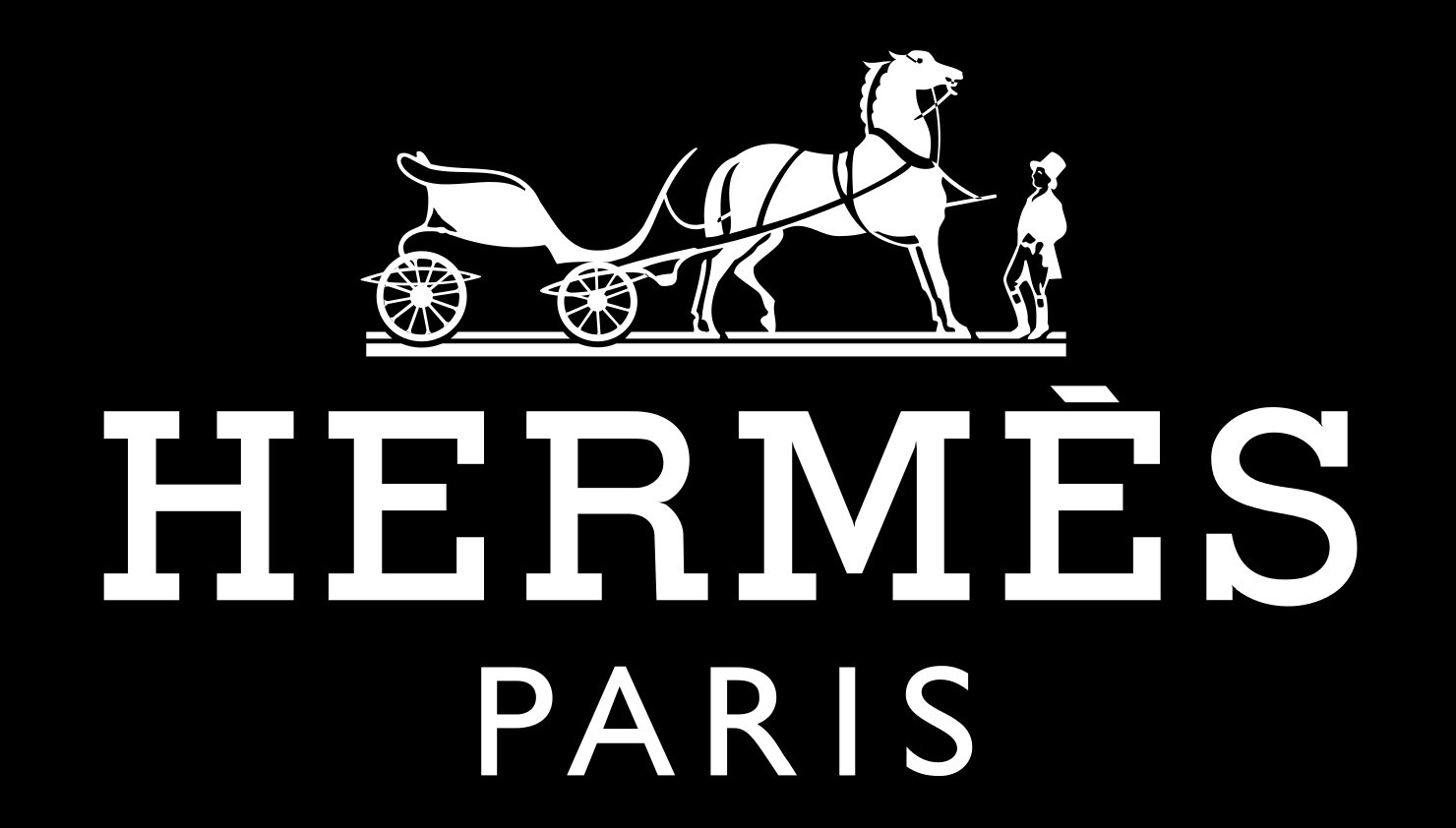Are you curious about the history and meaning behind the iconic Hermes logo? Look no further! Hermes is a luxury fashion brand that was founded in the 19th century and is named after its founder, Thierry Hermes. Initially, the company designed riding goods such as unique harnesses and bags. However, it became apparent that the stock must be expanded, leading to the creation of the Hermes logo.
Since the 1950s, the Hermes logo has been a depiction of a horse-drawn carriage, which draws inspiration from the company’s roots in designing riding goods. The logo is a symbol of luxury and elegance, representing the high-quality craftsmanship and attention to detail that Hermes is known for. The brand has become synonymous with sophistication and style, and the logo has become instantly recognizable worldwide. Stay tuned to learn more about the evolution of the Hermes logo and its significance in the fashion industry.
The Origin of Hermes Logo
When you think of the Hermes logo, the first thing that comes to mind is probably the iconic carriage and horse emblem. But how did this symbol come to represent one of the world’s most luxurious fashion brands?
The story begins in the 19th century when Thierry Hermes founded the company as a manufacturer of riding goods, including harnesses and bags. As the business grew, Hermes realized the need to expand its product line beyond just riding gear.
It wasn’t until the 1950s that the Hermes logo as we know it today was created. The carriage and horse emblem pays homage to the brand’s origins as a saddlery manufacturer and conveys a sense of luxury and sophistication.
Interestingly, the concept of a carriage as a symbol of luxury and status dates back centuries. The chariot was a symbol of power and wealth in ancient Mesopotamia, and horse-drawn carriages were a common mode of transportation for the upper classes in Europe during the 18th and 19th centuries.
Today, the Hermes logo is instantly recognizable and has become synonymous with high-end luxury and craftsmanship. The brand’s commitment to quality and attention to detail is reflected in every aspect of its products, from the iconic scarves to the coveted Birkin bags.
Understanding the Hermes Logo
The Hermes logo is one of the most recognizable and iconic symbols of luxury and high-end fashion. It represents the values, legacy, and identity of the brand, which is known for its exquisite craftsmanship, elegance, and timeless style. In this section, you will learn more about the history, meaning, and evolution of the Hermes logo.
History and Evolution
The Hermes logo has a long and rich history that dates back to the 19th century. The company was founded by Thierry Hermes, who started out as a manufacturer of bridles and harnesses for European nobles. Over time, the company expanded its product line to include leather goods, clothing, and accessories.
The first Hermes logo was a simple wordmark that featured the company’s name in a classic serif font. In the 1950s, the logo was updated to include a picture of a Duc carriage with a horse, which was meant to remind customers of the company’s origins as a saddlery manufacturer. Since then, the logo has remained largely unchanged, with minor tweaks to the typography and color palette.
Meaning and Symbolism
The Hermes logo is more than just a visual representation of the brand. It is a symbol of luxury, elegance, and craftsmanship that embodies the values and legacy of the company. The horse-drawn carriage in the logo represents the company’s roots in the equestrian world, while the orange color symbolizes energy, creativity, and passion.
The logo also reflects the company’s commitment to quality and attention to detail. Every Hermes product is crafted by skilled artisans who use only the finest materials and techniques to create pieces that are both beautiful and functional. The logo serves as a reminder of the company’s dedication to excellence and its unwavering commitment to its customers.
Conclusion
In conclusion, the Hermes logo is a powerful symbol of luxury, elegance, and craftsmanship that has stood the test of time. It represents the values and legacy of the brand, and serves as a reminder of the company’s commitment to quality, attention to detail, and customer satisfaction. Whether you are a fan of high-end fashion or simply appreciate beautiful design, the Hermes logo is sure to inspire and captivate you.
Symbolism in the Hermes Logo
When you look at the Hermes logo, you may notice that it features a horse-drawn carriage. This image has a lot of symbolism behind it, representing the brand’s history and values. Here are some of the key elements of the Hermes logo and what they mean.
The Duc Carriage
The centerpiece of the Hermes logo is the Duc carriage. This horse-drawn carriage was a popular mode of transportation in the 19th century, when the company was founded. The carriage was known for its elegance and craftsmanship, qualities that Hermes has come to embody. The carriage also represents the brand’s history and legacy, reminding us of its roots in the world of equestrian sports.
The Horse
The horse in the Hermes logo is also significant. Horses have been a part of the brand’s identity since its founding, as the company originally specialized in making harnesses and other equestrian gear. The horse in the logo represents the brand’s commitment to quality and craftsmanship, as well as its connection to the world of horses and equestrian sports.
Overall, the Hermes logo is a powerful symbol of the brand’s history, values, and commitment to quality. Whether you are a fan of the brand or simply appreciate good logo design, the Hermes logo is a powerful and iconic image that is sure to inspire and impress.
Evolution of the Hermes Logo
You may be surprised to learn that the Hermes logo has undergone several changes throughout its long history. The first logo, introduced in 1890, featured a Duc carriage with a horse and a groom. The logo was designed to reflect the company’s roots in horse harnesses and saddles.
In 1923, the iconic Hermes orange was introduced as the background color for the logo. The color was chosen because it was the favorite color of Emile-Maurice Hermes, the grandson of the company’s founder. The orange color has become synonymous with the brand and is instantly recognizable.
In 1949, the current Hermes logo was introduced. The logo features a Duc carriage and horse, but with a simplified and more stylized design. The logo is elegant, timeless, and represents the brand’s commitment to quality and craftsmanship.
Over the years, the Hermes logo has been used in a variety of ways, from the classic printed scarf to the iconic Birkin bag. The logo has also been adapted for different products, such as the Hermes perfume line.
Today, the Hermes logo is still a symbol of luxury and elegance, and it continues to evolve with the times. The brand has expanded its product line to include everything from jewelry to home decor, but the Hermes logo remains a constant reminder of the brand’s heritage and commitment to quality.
Impact of the Hermes Logo
The Hermes logo is a symbol of luxury, elegance, and craftsmanship. It has had a significant impact on the fashion industry and has become a recognizable icon around the world. Here are a few ways in which the Hermes logo has made an impact:
Brand Recognition
The Hermes logo is instantly recognizable. The iconic orange box with the white ribbon and the bold, sans-serif font has become synonymous with luxury and high-end fashion. The logo has helped to establish Hermes as one of the most prestigious fashion brands in the world.
Status Symbol
Owning a Hermes product with the logo prominently displayed is a status symbol. The logo is a way to show off your wealth and taste. The brand has become associated with the elite and is often seen as a way to display your social status.
Timeless Style
The Hermes logo is a symbol of timeless style. The brand has been around for over a century and has maintained its reputation for quality and craftsmanship. The logo is a reminder of the brand’s heritage and legacy.
Inspiration for Designers
The Hermes logo has inspired countless designers. The bold font and simple design have become a template for other luxury brands to follow. The logo has become an icon in its own right and has set a standard for luxury branding.
Overall, the Hermes logo has had a significant impact on the fashion industry. It has become a symbol of luxury, elegance, and craftsmanship and has helped to establish Hermes as one of the most prestigious fashion brands in the world.
Hermes Logo in Popular Culture
The Hermes logo is an iconic symbol of luxury and elegance that has become ingrained in popular culture. The logo has been featured in various forms of media, including movies, television shows, and music videos.
In the movie “The Devil Wears Prada,” the main character, played by Anne Hathaway, is seen carrying a Hermes Birkin bag with the logo prominently displayed. The bag has become a status symbol in the fashion world and is often referred to as the “Holy Grail” of handbags.
In the television series “Sex and the City,” the character Samantha Jones, played by Kim Cattrall, is seen carrying a Hermes Kelly bag with the logo displayed prominently. The bag has become synonymous with luxury and sophistication.
The Hermes logo has also been featured in music videos, including Beyonce’s “Formation,” where she is seen wearing a Hermes scarf with the logo prominently displayed. The scarf has become a popular accessory in the music industry and is often worn by celebrities.
In addition to its appearances in popular culture, the Hermes logo has also been the subject of controversy. In 2019, the company faced backlash for burning unsold products, including bags and scarves with the logo displayed prominently. The incident sparked a conversation about sustainability and the ethics of luxury fashion.
Overall, the Hermes logo has become a symbol of luxury and sophistication that is recognized around the world. Its appearances in popular culture have only served to reinforce its status as a coveted and iconic brand.
Conclusion
Congratulations! You have learned about the Hermes logo and what it represents. The Hermes logo is a symbol of luxury, elegance, tradition, quality, sophistication, and status. Its use of a horse-drawn carriage shows that it has a rich history that dates back centuries. The combination of imagery and typography creates an overall sense of high-end luxury that is synonymous with the Hermes brand.
The Hermes logo draws inspiration from the company’s roots. Created well after the company was first established, it was revealed in 1950. The horse and carriage represent the brand’s commitment to quality and enduring style. The colors black and orange are used to create a bold yet sophisticated image that captures the essence of what Hermes stands for.
The Hermes logo serves as the visual representation of a brand’s identity, values, and legacy. When it comes to luxury and high-end fashion, the Hermes logo stands as an iconic symbol of elegance, craftsmanship, and timeless style. The logo has remained consistent over the years, which has helped it become recognizable worldwide.
In conclusion, the Hermes logo is a symbol of luxury, sophistication, and timeless elegance. It represents the company’s commitment to quality and enduring style. The logo has a rich history that dates back centuries, and its use of a horse-drawn carriage creates an overall sense of high-end luxury that is synonymous with the Hermes brand.
Barry Edwards is a digital marketing expert with a deep understanding of content strategy, logo, and branding principles. Holding a Bachelor’s degree in Marketing from Beaconhill College, he offers valuable insights on digital marketing trends and strategies through his writing. Follow Barry’s work to stay updated on the latest in online marketing and branding.



